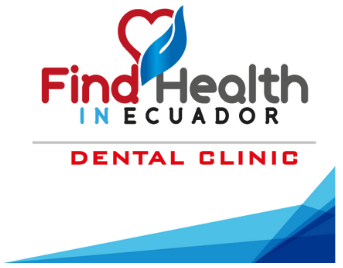Table of Contents
Getting dental implants can be a life-changing experience for many people. It can restore your smile, improve your chewing ability, and boost your confidence. However, the road to recovery after getting dental implants can be challenging. Knowing what to expect can help you prepare for the process and make it as smooth as possible.
Before the Procedure
Before you get dental implants in Cuenca, your dentist will conduct a thorough examination of your teeth and jawbone to determine if you are a suitable candidate for the procedure. They may also take X-rays or CT scans to assess the condition of your jawbone and plan the placement of the implants.
Once you are cleared for the procedure, your dentist will discuss the treatment plan with you, including the number of implants needed, the type of implants to be used, and the timeline for the procedure. They will also provide you with pre-operative instructions, such as avoiding certain foods or medications before the surgery.
During the Procedure
The dental implant procedure typically involves several steps. First, the dentist will numb the area with local anesthesia to ensure you are comfortable during the surgery. They will then make an incision in the gum tissue to expose the jawbone and drill a hole for the implant to be placed.
Once the implant is securely in place, the dentist will close the incision with stitches and place a temporary crown or bridge over the implant to protect it during the healing process. The entire procedure can take several hours, depending on the number of implants being placed.
After the Procedure
After getting dental implants in Cuenca, it is normal to experience some discomfort, swelling, and bruising in the days following the surgery. Your dentist may prescribe pain medication or recommend over-the-counter pain relievers to help manage any discomfort.
It is important to follow your dentist’s post-operative instructions carefully to ensure proper healing. This may include avoiding certain foods, practicing good oral hygiene, and attending follow-up appointments to monitor your progress.
Most patients can resume their normal activities within a few days after getting dental implants, but it may take several months for the implants to fully integrate with the jawbone. During this time, it is important to be patient and allow your body to heal properly.
Long-Term Care
Once your dental implants have healed, it is important to maintain good oral hygiene to prevent complications and ensure the longevity of your implants. This includes brushing and flossing regularly, visiting your dentist for routine check-ups, and avoiding habits that can damage your implants, such as smoking or chewing on hard objects.
Your dentist may also recommend using a special mouthwash or dental tools to clean around the implants and keep them free of plaque and bacteria. By following these recommendations, you can enjoy your dental implants for many years to come.
FAQs
Q: How long does it take to get dental implants in Cuenca?
A: The dental implant process typically takes several months from start to finish. This includes the initial consultation, the surgery to place the implants, and the healing period before the final restoration is placed.
Q: Are dental implants painful?
A: While getting dental implants involves surgery and some discomfort, most patients report minimal pain during the procedure. Your dentist will numb the area with anesthesia to ensure you are comfortable throughout the surgery.
Q: How long do dental implants last?
A: With proper care and maintenance, dental implants can last a lifetime. It is important to follow your dentist’s recommendations for oral hygiene and attend regular check-ups to ensure the longevity of your implants.
Q: Can anyone get dental implants in Cuenca?
A: Most people are suitable candidates for dental implants, but your dentist will need to evaluate your oral health and jawbone density to determine if you are a good candidate for the procedure. In some cases, additional treatments may be needed to prepare the jawbone for implants.
Overall, getting dental implants in Cuenca can be a life-changing experience that can restore your smile and improve your quality of life. By knowing what to expect before, during, and after the procedure, you can navigate the road to recovery with confidence and peace of mind.
Adam Elliot Altholtz serves as the Administrator & Patient Coordinator of the “Find Health in Ecuador Dental Clinic”, along with his fellow Expats’ beloved ‘Dr. No Pain’, right here in Cuenca, Ecuador, and for purposes of discussing all your Dental needs and questions, is available virtually 24/7 on all 365 days of the year, including holidays. Adam proudly responds to ALL Expat patients from at least 7:00am to 9:00pm Ecuador time, again every single day of the year (and once more even on holidays), when you write to him by email at [email protected] and also by inquiry submitted on the Dental Clinic’s fully detailed website of www.findhealthinecuador.com for you to visit any time, by day or night. Plus, you can reach Adam directly by WhatsApp at +593 98 392 9606 or by his US phone number of 1‐(941)‐227‐0114, and the Dental Clinic’s Ecuador phone number for local Expats residing in Cuenca is 07‐410‐8745. ALWAYS, you will receive your full Dental Service in English (NEVER in Spanish), per you as an Expat either living in or desiring to visit Cuenca by your Dental Vacation, plus also to enjoy all of Ecuador’s wonders that are just waiting for you to come arouse and delight your senses.
